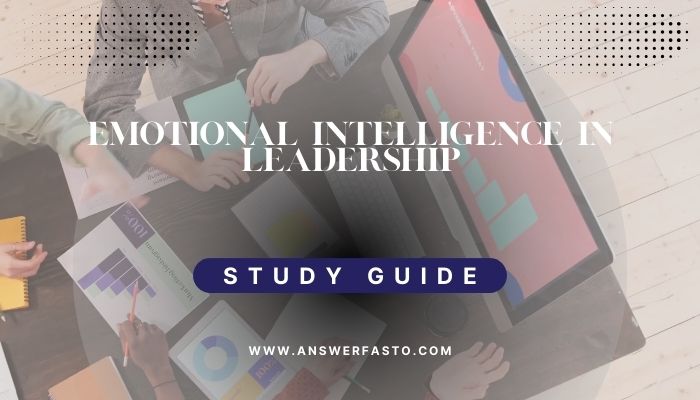The Worth of Emotional Intelligence
Effective leadership assumes quality virtues like emotional intelligence as the pillars on which effective leaders perceive, comprehend, recognize, and manage emotions in themselves and others. Indeed, it includes enhancements in relationships, resolution of conflicts, and motivation for teamwork. This paper discusses the application of and benefits accruing from emotional intelligence for leaders.
1.Self-awareness:
This is not just an action or habit of an emotionally intelligent leader but being aware of emotion. They are aware that their triggers are emotions, and thus learn how they affect the decisions they make and how others interact with them. Hence, understanding one’s emotional triggers makes one understand what their strengths and limitations are, thus leading to an objective towards better decisions taken by those leaders while building trust.
Example:
A project manager in a scenario where there is an extremely tight deadline feels the stress of it toward the end of the tight deadline and takes measures to calm himself, while managing to remain cool, clearly speaking, and confidently put forward the team’s perspective in extremely critical incidents.
2. Empathy:
To understand the employees concerned with both the emotional states as well as feelings in order to render the suitable assistance needed for earning their trust and thus contributing to a positive and healthy working environment.
Example:
A good boss would make himself available whenever one of his or her subordinates has a personal problem and extend deadlines, thus further bonding the team.
3. Great Communication:
Highly emotionally intelligent people communicate well. They are empathetic listeners, impartial judges, and those who adapt the word-organs appropriately.
4. Conflict Resolution.
The leaders carry out constructive conflicts based on their emotional intelligence. They, therefore, remain cool, the same as problems, and search for solutions that will be adopted by all of them.
Example:
Two teammates differ during a meeting on some strategy. The leader will acknowledge the views, begin a constructive conversation, and work out a compromise that meets project goals.
5. Motivation:
In this way, an EQ leader knows what motivates members of his team. Thus, he could foster inspiration and motivation in a personalized way to improve morale and productivity.
Example:
A department head can observe the fact that one team member would prefer career advancement, while one thrives on public recognition. By offering personalized motivators, he keeps both motivated and engaged.
How can You Apply Emotional Intelligence in Leadership?
1. Building Relationships:
Under this situation, the leaders can be found by fulfilling the relationship-strengthening exercise with the use of EQ-actively listening, understanding the problem, and showing empathy.
Example: A project manager can create this environment by talking to each of the people about their concerns, appreciation, and free communication.
2. Resolution of a Conflict:
A Leader with high EQ Functions by Keeping Every Conflict Calm and Composure Recognizing the Emotions Present in the Issue and Building Similar Understanding to Create an Efficient Change Effect.
Example: There is a conflict developing within the cross-functional team due to differences in working styles among them. Then the project leader steps in to ascertain differences in emotional triggers, and a resolution satisfying all parties takes place.
3. Different Motivators for Team Members:
Recognizing the variable kinds of motivational forces behind every team member, a leader will be in a position to provide personalized incentives and praises for working harder with the same result.
Example: A team leader develops professional development opportunities for employees who are career-oriented, while public recognition serves those employees who are recognition-oriented, thereby ensuring individual appreciation.
4. Adapt Communication Styles:
Leaders employ different styles of communicating to resonate with the modes of team members so that the piercing message is clear and exciting.
Example: So, the department head gives an update of documents to introverts and collaborate as a team.
5. Manage Conflict Well:
High EQ keeps a leader cool in a heat while listening to the whole argument and guiding the whole team toward the solution.
Example: For instance, during a project meeting, a project manager acts like a mediator between conflicted team members to acknowledge their feelings and help in getting to an answer that would work with the project’s purpose.
Conclusion:
The emotional intelligence found in leaders will aid in their overall operations, as it will be a cornerstone for the relationships built, conflicts resolved, inspired portions, and ways by which one communicates to others. The more leaders continue to develop and apply their skills in EQ, the more they realize spaces for better environments where productivity, success with projects, and team unity thrive.



